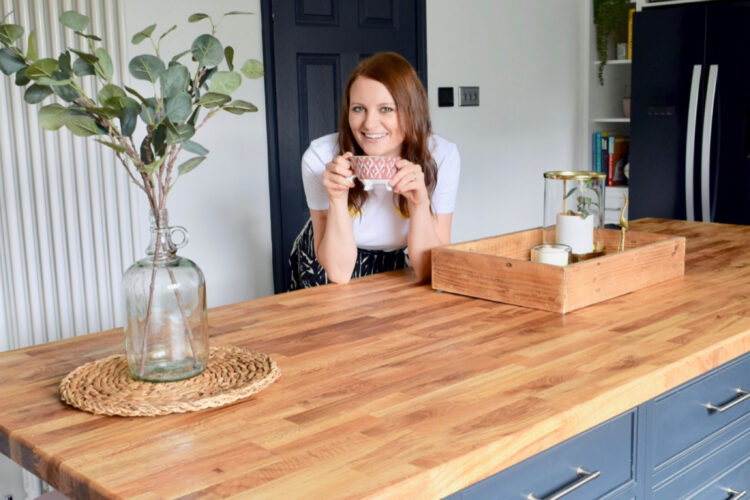
I. Introduction to Upcycled DIY Kitchen Islands
II. Materials and Tools Needed for Your Project
III. Step-by-Step Guide to Building Your Upcycled Kitchen Island
Introduction to Upcycled DIY Kitchen Islands
Hey there, fellow DIY enthusiast! Are you tired of your kitchen looking a bit drab or lacking in space? Well, let me introduce you to the magical world of upcycled DIY kitchen islands! Not only do they add a fabulous focal point to your cooking area, but they also provide much-needed storage and workspace. Plus, creating one yourself means you can tailor it to fit your unique style and needs.
Now, you might be wondering, “What exactly is an upcycled kitchen island?” Great question! Upcycling is all about taking old, unused, or discarded materials and transforming them into something new and functional. Imagine turning a vintage dresser, an old table, or even reclaimed wood into a stunning kitchen island that speaks to your personality. It’s like giving new life to items that might otherwise end up in a landfill, and it feels pretty darn good!
Why choose an upcycled kitchen island? Here are a few reasons:
- Sustainability: By upcycling, you’re making an environmentally friendly choice. You’re reducing waste and promoting a more sustainable lifestyle, which is something we can all get behind!
- Cost-effective: Upcycling often costs less than buying new furniture. You might already have some materials lying around, or you could find them at thrift stores or garage sales for a steal!
- Customization: One of the best parts of creating your own kitchen island is that you can design it to fit your space perfectly. Whether you want a rustic farmhouse vibe or a sleek modern look, the possibilities are endless.
- Unique Style: An upcycled kitchen island will be a one-of-a-kind piece that showcases your creativity. You won’t find anything like it in mainstream stores, and that’s something to be proud of!
Now, you might be thinking about where to begin. Don’t worry! Upcycling your kitchen island is a fun journey that allows your creativity to shine. You can start by scouting out materials you already have or looking for hidden gems in thrift shops. Perhaps you have an old wooden table that’s seen better days or some leftover cabinets from a renovation. With the right vision, these items can be transformed into something functional and fabulous!
But before you dive in, it’s essential to consider a few practical factors:
- Space: Assess your kitchen area. Measure the available space to ensure your new island will fit comfortably without crowding your cooking area.
- Functionality: Think about how you plan to use your island. Do you need extra counter space for meal prep, or will it serve as a breakfast bar for quick meals?
- Style: Consider the overall aesthetic of your kitchen. Make sure your upcycled island complements your existing decor.
So, are you ready to roll up your sleeves and let your imagination run wild? Upcycling your kitchen island is not just a practical project; it’s an exciting adventure that can breathe new life into your kitchen while showcasing your personality and values. Stay tuned for the next steps, where we’ll gather materials and tools to bring your vision to life!
Materials and Tools Needed for Your Project
Alright, friends! If you’re ready to dive into the world of upcycled DIY kitchen islands, let’s talk about what you’ll need. This isn’t just a simple shopping list; it’s an adventure in creativity and resourcefulness! So, grab a cup of coffee, roll up your sleeves, and let’s get started!
Materials
When it comes to materials, the beauty of upcycling is that you can use just about anything you have lying around. Here’s a handy list to help you gather what you might need:
- Old Furniture: Look for items like dressers, tables, or cabinets that can be transformed into your kitchen island. Thrift stores, garage sales, or even your own attic are great places to find hidden gems!
- Wood Planks: If you’re feeling a bit more ambitious, consider using reclaimed wood or pallet wood. It’s not only sustainable but adds a rustic charm to your island.
- Countertop Material: Depending on your design, you might want a solid surface like granite, butcher block, or even a piece of laminate. Get creative with what fits your style!
- Paint or Stain: For a fresh look, pick a color or type of stain that complements your kitchen. Chalk paint, for instance, can give a lovely matte finish, while oil-based options provide durability.
- Hardware: Don’t forget knobs, handles, or pulls that match your aesthetic. Check out salvage stores or online marketplaces for unique options!
- Protective Finish: A clear coat or sealant will help protect your island from spills and scratches, ensuring your hard work lasts for years.
Tools
Next up, let’s talk tools. You don’t need to be a master carpenter to tackle this project, but having a few essential tools on hand will make your life a whole lot easier:
- Measuring Tape: Accurate measurements are crucial! Make sure you have a good measuring tape to keep things in line (literally).
- Power Drill: This will become your best friend. You’ll use it for assembling and attaching pieces, so make sure you have drill bits handy!
- Saw: Depending on your materials, a circular saw or jigsaw will be essential for cutting wood to size. Just remember to follow safety guidelines!
- Sander: To achieve that smooth finish, a sander will help you eliminate rough edges and splinters. You can use sandpaper if you prefer a more hands-on approach.
- Level: This nifty tool ensures that your island stands firm and balanced. A wobbly kitchen island is not a happy kitchen island!
- Paintbrushes/Rollers: If you’re painting or staining, don’t forget your brushes! A good brush will help achieve a smooth and even finish.
So there you have it! With a bit of creativity and some handy materials and tools, you’ll be well on your way to building your very own upcycled kitchen island. Remember, the key is to have fun, embrace the imperfections, and let your personality shine through in your creation. Happy upcycling!
Step-by-Step Guide to Building Your Upcycled Kitchen Island
Are you ready to dive into the exciting world of DIY and transform your kitchen with a stunning upcycled island? Let’s get those creative juices flowing! With just a bit of time and effort, you’ll have a unique piece that not only serves a purpose but also showcases your personality. Ready? Let’s roll up our sleeves and get started!
Step 1: Gather Your Materials
First things first, you’ll need to gather all your materials. Here’s a quick list to help you out:
- Old furniture pieces (think tables, dressers, or cabinets)
- Wood screws and nails
- Sandpaper (various grits)
- Wood glue
- Paint or stain
- Sealer (if using paint or stain)
- Tools: drill, saw, screwdriver, and measuring tape
Remember, the beauty of upcycling is in finding materials that you may already have or can snag from a thrift store. Keep an open mind!
Step 2: Design Your Island
Next up is the design phase – and this is where the fun really begins! Sketch out what you want your kitchen island to look like. Consider the following:
- Size: How much space do you have? Measure carefully!
- Function: Will it be purely for prep work, or do you want it to include seating?
- Style: Are you looking for a rustic farmhouse vibe or a sleek modern look?
Don’t hesitate to browse online platforms like Pinterest for inspiration! Visualizing your dream kitchen island can really help bring your project to life.
Step 3: Prepare Your Pieces
Once you’ve finalized your design, it’s time to prepare your materials. Start by:
- Cleaning all surfaces thoroughly to remove any dust and grime.
- Sand down any rough edges to ensure a smooth finish.
- Make any necessary cuts to your furniture pieces according to your design.
This step is crucial as it sets the foundation for the rest of your project. A little elbow grease goes a long way!
Step 4: Assemble Your Island
Now comes the moment of truth: assembly! Here’s how to piece everything together:
- Start by attaching the main components, like the tabletop to the base.
- Use wood glue and screws to secure everything; make sure it’s nice and sturdy!
- If you’re adding shelves or drawers, this is the time to install them!
Be patient during this step. It’s better to double-check your work and make adjustments as needed than to rush through!
Step 5: Finish with Style
Finally, let’s add that perfect finishing touch! Choose a color that complements your kitchen decor:
- If you’re going for a vibrant look, don’t shy away from bold colors.
- For a more understated style, consider natural wood stains that enhance the grain.
Once you’ve painted or stained your island, be sure to apply a sealer to protect your hard work. Let it dry completely before putting it to use.
And there you have it! With some creativity and hard work, you’ve transformed upcycled materials into a fantastic kitchen island that’s uniquely yours. Enjoy your new space and all the delicious meals and gatherings it will host!



Comments